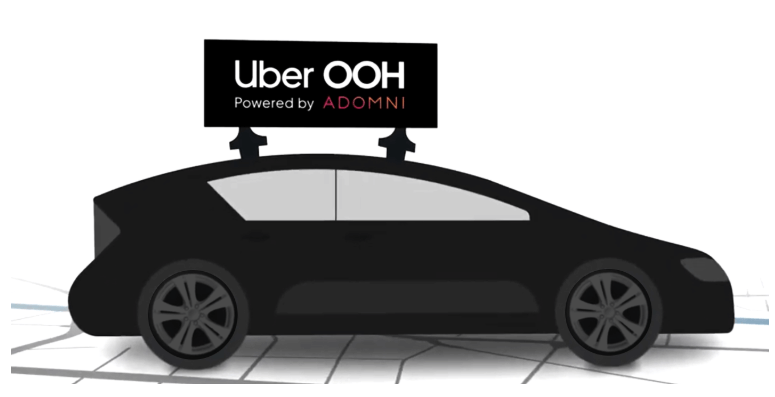Uber’s new digital OOH unit brings location-targeted ads to car-top screens
Suddenly, the market for programmatic taxi-top advertising is accelerating.
It was inevitable that Uber would get into advertising. Now it has to as the company faces increasing pressure to be profitable. Yesterday, Adweek first reported that the ride-sharing platform had partnered with Adomni to create Uber OOH and bring digital screens to its drivers in three cities: Atlanta, Dallas, and Phoenix.
Competition heating up. An initial trial will run through April. After that, the program will likely expand to more cities. It’s elective for drivers; since they’re not “employees” (according to Uberall) the company can’t compel its drivers to participate. Instead, there’s a financial sign-up incentive and drivers who log more than 20 hours per week will be eligible for additional fees. However, drivers don’t receive a cut of ad revenue.
Many Uber drivers also drive for Lyft, which just acquired Halo Cars, a relatively small “taxi-top” ads startup. Firefly also competes in this space, promising Uber and Lyft drivers more income in exchange for mounting digital screens on their cars. Indeed, the ride-sharing, car-top ads market could quickly become a battle for driver participation and loyalty, raising payouts and financial incentives.

Targeting and reporting. Uber OOH promises 1,000 cars, 180 million monthly impressions and “millions of miles” of ad exposures. It also says you can do precise geotargeting by neighborhood. The company will offer “performance reports.” It’s not clear, however, what that means and what specific metrics will be provided.
Location targeting can be and has become a surrogate for audience targeting in many cases. For example the audiences you’ll find between 8am and 12pm in a downtown business district will be different than those in particular residential neighborhood after 5pm or near entertainment venues and restaurants at night on the weekend.
Uber OOH competitor Firefly offers store visitation metrics, but also will report on ad-influenced website visits and app downloads. (This is done using ad IDs on mobile devices.) Uber OOH will need to match at least some if not all of those reporting metrics to be competitive.
Uber OOH ads can be purchased on a programmatic basis and dynamically change based on location and time of day. So advertisers can run ads only when and where their intended audiences are likely to see them. That’s a major different from traditional OOH.
Why we care. OOH advertising is the only traditional medium that’s growing. But digital OOH is growing faster, combining the creative power of real-world physical presence with the efficiency of digital media. Now is probably the time for marketers to test programmatic digital OOH (which goes way beyond these taxi-top ads) to determine if it can be effective for their clients.
Contributing authors are invited to create content for MarTech and are chosen for their expertise and contribution to the search community. Our contributors work under the oversight of the editorial staff and contributions are checked for quality and relevance to our readers. MarTech is owned by Semrush. Contributor was not asked to make any direct or indirect mentions of Semrush. The opinions they express are their own.
Related stories